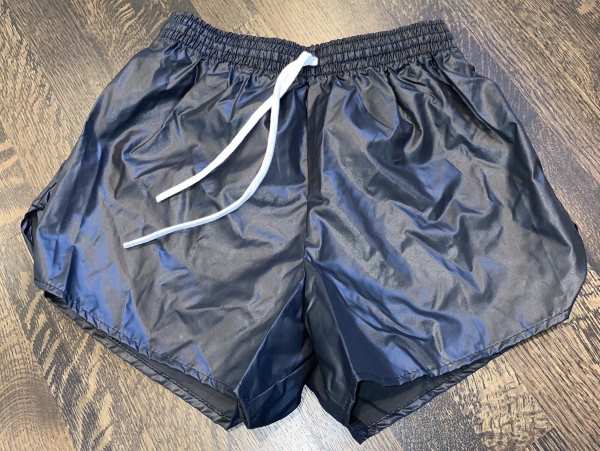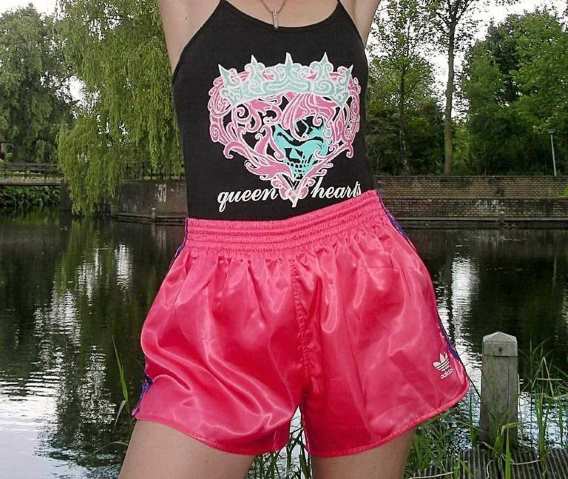Can Nylon Shorts Go In Water? Spandex and Elastane Blends are Perfect
Nylon swimwear is incredible, and it can last a long time. Therefore, the answer is yes, you can swim in nylon shorts, but the nylon has to be blended with spandex or elastane to make it stretchy and able to maintain its shape. If you are looking for the best shorts for swimming, consider nylon or spandex.
When the swimming season sets in, it is time to take off your swimming attire and prepare for long, relaxing moments in your saltwater or chlorine swimming pool.
If you intend to buy your women’s or male swimming attire, you will find that they come in different fabrics. In another post, we saw that you can swim in polyester swimwear.
But Polyester is not the only material used for swimwear. Others are nylon and spandex, and if you intend to wear a wetsuit for swimming, it comes in neoprene.
But while reaching for your favorite pair of nylon shorts might seem convenient, their suitability for swimming deserves closer examination.
What are its properties, benefits, drawbacks, and specific considerations for both men and women? Keep reading as we explore these, and many more.
Is nylon used for swimwear?

Absolutely! Nylon is a staple fabric in swimwear due to its numerous advantages. Its lightweight, quick-drying nature makes it perfect for active water activities.
It also boasts excellent durability and resistance to chlorine and saltwater, making it a long-lasting option for frequent swimmers.
Additionally, when blended with spandex, it has stretchy and comfortable characteristics to ensure unrestricted movement in the water.
However, pure nylon alone is rarely used in swimwear. Instead, it’s often blended with other materials, like spandex or elastane, for increased flexibility and shape retention.
These blends further improve the functionality and comfort of swimsuits, making them ideal for various swimming strokes and body types.
Is nylon good for swimming for women?
For women, children, and men, nylon swimwear is just great. It offers several benefits, such as the following:
It is quick-drying: This eliminates the discomfort of clinging to wet fabric after swimming, reducing the risk of chafing and irritation. If you swim with a yeast infection, you want a swimsuit that dries soon after you get out of the water.
Chlorine and saltwater resistance: Nylon retains its shape and color longer, even with frequent exposure to pool chemicals or saltwater.
It is supportive and comfortable: When blended with spandex, nylon offers good support and compression, flattering various body shapes and ensuring comfortable movement. If you find nylon swimming shorts with compression, buy them.
Available in a wide variety of styles: From bikinis and swimming tankinis to one-piece suits and swim skirts, nylon offers diverse style options to cater to different needs.
Is nylon good for swimming for men?
Similar to women’s swimwear, nylon provides several advantages for men too. Here are some of them:
It is durable and resistant: Nylon withstands vigorous use and rough activities such as beach games, sand, pebbles, and harsh pool chemicals. This is what makes it a good choice for active swimmers.
Quick-drying and comfortable: The fast-drying nature prevents clinging fabric and discomfort, while the flexible material allows for unrestricted movement.
Many styles: From board shorts and swim trunks to briefs and jammers, nylon offers diverse styles to suit different preferences and activities.
Drawbacks of nylon swimwear
Limited sun protection: Pure nylon offers minimal UV protection, so opting for thicker blends or swimsuits with a tighter weave is crucial for sun safety.
It can be revealing when wet: Nylon tends to become slightly transparent when wet, which might be a concern for some women. Opting for lined swimsuits or choosing darker colors can alleviate this issue.
May lack warmth: While suitable for warmer water, nylon might not be the best choice for cooler temperatures, as it doesn’t provide much insulation. Thus, it won’t be suitable for swimming in cold water.
Can I use normal shorts for swimming?

Regular shorts made of cotton or other non-synthetic materials are just not suitable for swimming. You should not swim in home clothes. Here are some of the reasons why you should not swim in regular shorts or clothes.
Cotton absorbs water: This causes the cotton shorts to become heavy, and uncomfortable and slow down drying, potentially leading to chafing and irritation.
They can damage pool filters: Cotton clothes can shed and clog pool filters with fibers, causing problems for swimming pool maintenance.
It violates pool rules: Many pools have specific dress codes prohibiting non-swimwear materials like cotton shorts. You should check the swimming pool regulations so that the lifeguards don’t send you away.
Therefore, using dedicated swimsuits made with appropriate materials like nylon, polyester, elastane, and spandex blends is highly recommended for a safe and enjoyable swimming experience.
Instead of playing trial-and-error games with home clothes, you can order your favorite swimwear from Amazon.com.
Is nylon waterproof?
If you are asking this question in regard to nylon swimwear, well, nylon is not waterproof. Sure, it has water-repellent properties, but it’s not entirely waterproof.
It absorbs a small amount of water, but the good thing is that its quick-drying nature ensures the absorbed water evaporates rapidly. This keeps you comfortable and dry after swimming.
Nylon is super lightweight, so even if it absorbs water, you will not feel any extra weight or experience any drag in the water when swimming.
Depending on the swimming-related activities that you intend to do, buy thicker or thinner nylon swimwear. Thicker nylon thread is more recommended since it does not absorb much water.
Helpful tips for choosing swimwear
When choosing specific swimming attire, it’s important to consider factors like the activity, water temperature, desired level of sun protection, and personal preferences for fit and style.
With thoughtful selection, you can find the perfect nylon-blend swimsuit that maximizes your comfort and enjoyment in the water.
You can also choose swimwear depending on where you are going to swim. For instance, for swimming in Saudi Arabia, you need swimwear that covers more skin.
For swimming in the Dead Sea, you need swimming attire that can protect your skin from the minerals in the water.
Final thoughts
Today, the most used fabrics in the manufacture of swimwear are polyester and nylon, blended with spandex and elastane.
While polyester blends are the all-time favorites, nylon blends are a close second because of their durability, fast-dry nature, and comfortable stretch.
For both men and women’s swimwear, nylon offers numerous benefits, enabling enjoyable and versatile swimming experiences. However, understanding its limitations, like sun protection, and considering alternative materials for cold water is crucial for making informed choices.
Remember, always check pool rules to ensure your swimwear adheres to their dress code for a safe and pleasant swim.
